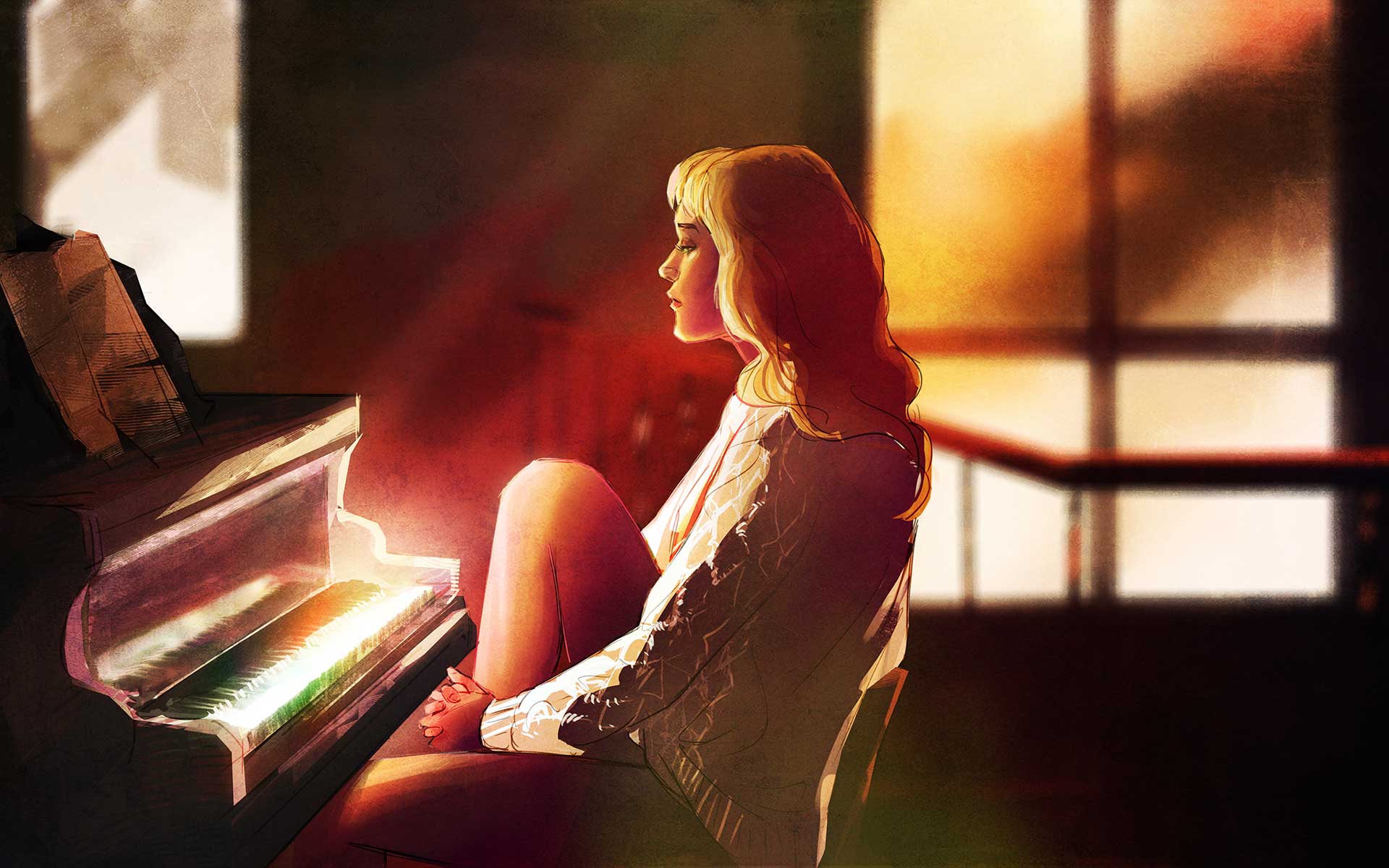After creating Along the Edge and Seers Isle, French developer Nova-box has another narrative game in development—Across the Grooves.
Similar to Along the Edge and Seers Isle, Across the Grooves is also described as an interactive graphic novel. The story follows Alice as she accidentally travels back into the past thanks to a mysterious vinyl record from her ex-lover. When she returns and realizes that her present has changed, Alice tries to track down her ex, traveling across Europe on a journey to recover her former life. But along the way, she still listens to the time-bending record and visits other alternate timelines.
After Gamescom, Cliqist was able to get in touch with Geoffroy Vincens, founder and writer at Nova-box. He wrote both Along the Edge and Seers Isle. He is currently writing Across the Grooves. Over email, he shared more information on the inspiration behind the game and the music it contains.
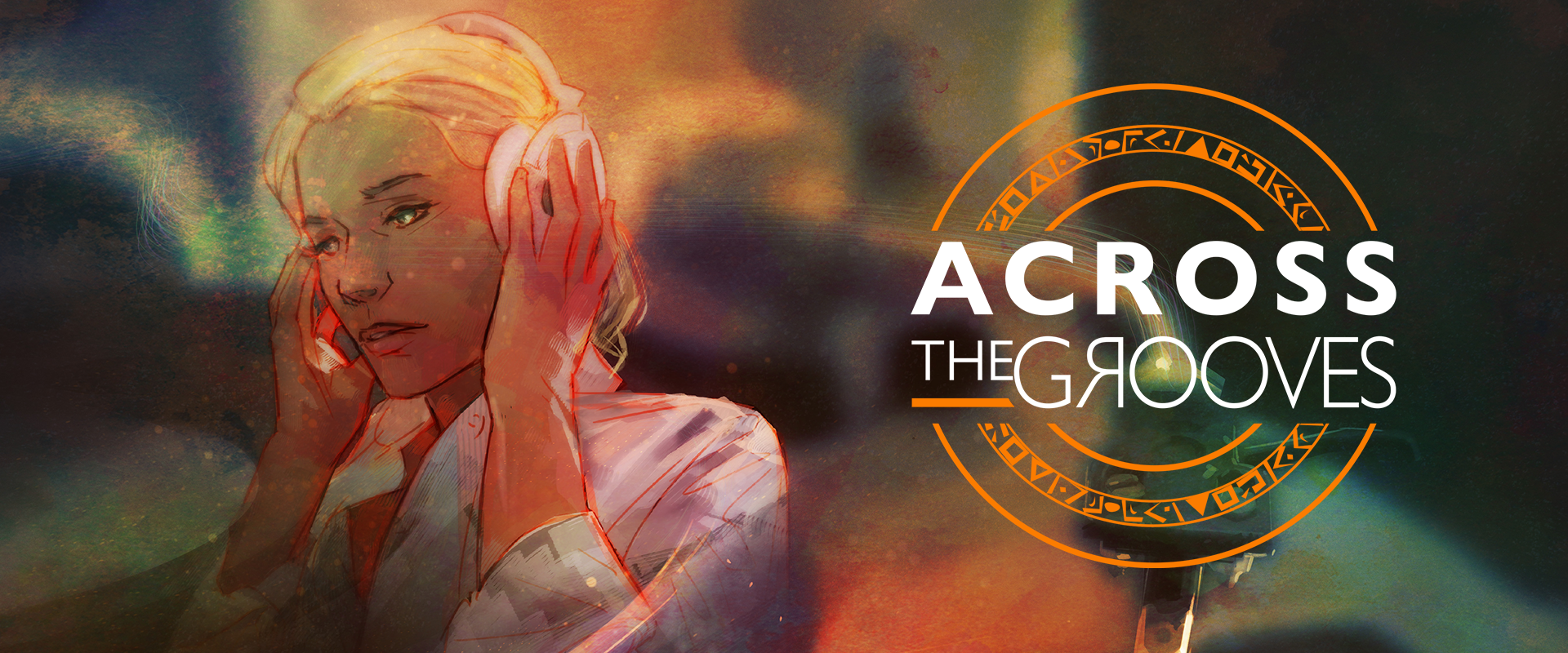
Cliqist: Where did the idea for Across the Grooves come from?
Geoffroy Vincens: The idea behind Across the Grooves came from two different places: on the one hand, I’ve wanted to write a story about music and record collectors for a while, because, as a vinyl collector myself, it’s a world I know and love, and I thought it would make for a great setting for an interactive novel. On the other hand, I wanted to re-explore a concept we already tackled in Along the Edge, one of our previous games, and that was well received and praised by the players. It’s the idea of having a protagonist who evolves psychologically and changes her appearance along the course of the story, according to the player choices.
I usually like to develop my stories around one big overarching question. In the case of Across the Grooves, this question would be: If you had a choice, would you rather change your past, correcting any regrets or missed opportunities that may haunt you today, or would you rather not look back and focus on improving your future? Thus came the idea of having the plot revolving around a special vinyl record that allows the listener to revisit events from their past and change them, altering their reality in the process.
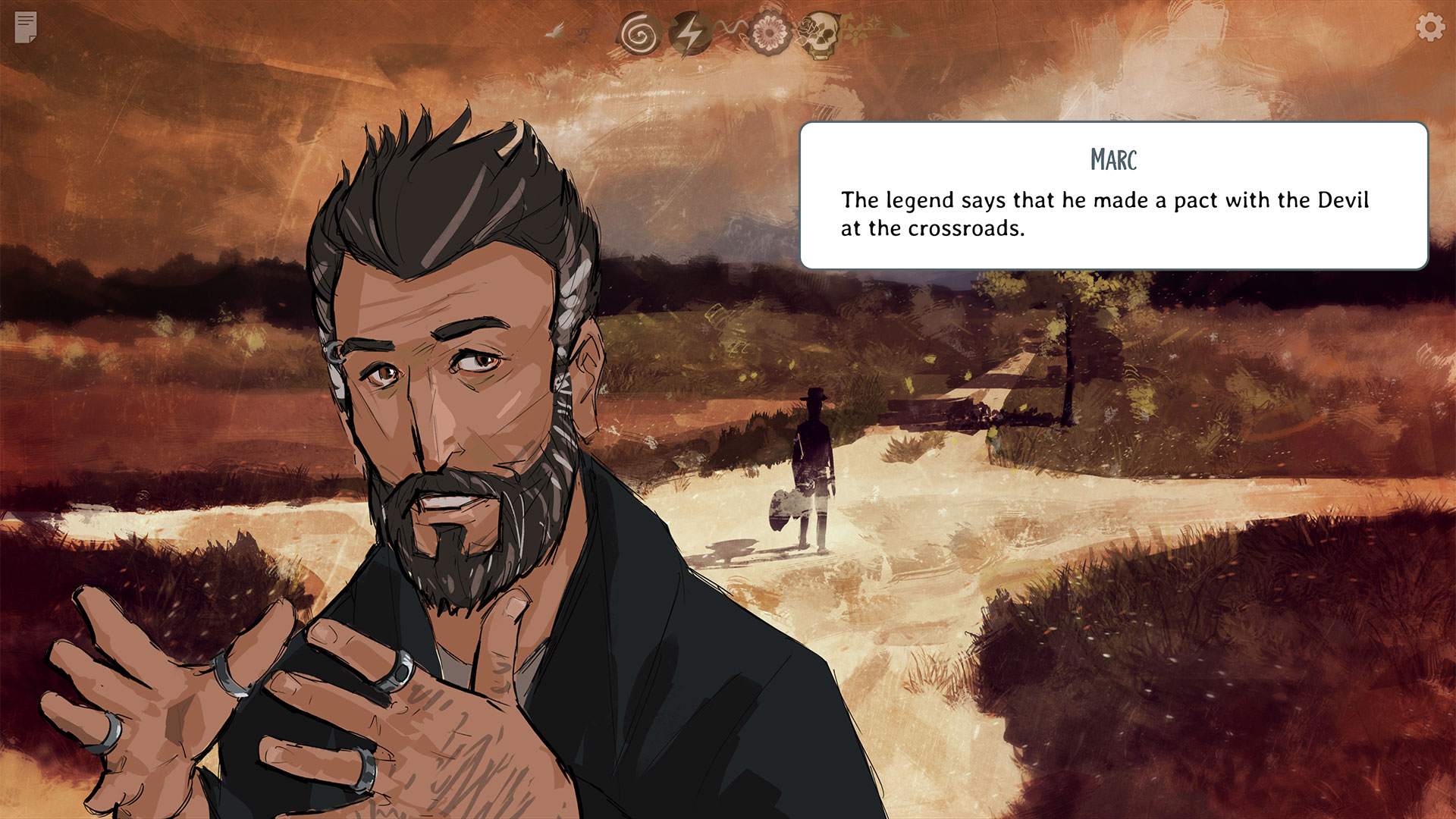
How will this interactive graphic novel compare to the previous ones you’ve made, Seers Isle and Along the Edge?
We think we’ve developed a certain “style” over our past releases. Our projects exist in a space that’s on the boundary between videogames and comic books (well, European “bande-dessinée” to be accurate). This new project won’t be much different in terms of presentation: a lot of illustrations, very few animations, an emphasis on the text as the main vector of the story.
In terms of story and universe, we’re going back to something that will be closer to Along the Edge than to Seers Isle, as Across the Grooves will take place in a contemporary setting with magic-realism elements and adult protagonists.
Do you have a strategy for keeping track of time travel and alternate realities for a clear plot in Across the Grooves? Or is there a desire to make things more ambiguous?
Well, I’m afraid going into too much detail might spoil some of the story. Hopefully, once you reach one of the endings of the game, the whole plot will make sense to you. However, what I can tell you is that the time-travel element will be revolving more around the emotional journey of the protagonist rather than a complicated temporal loop.
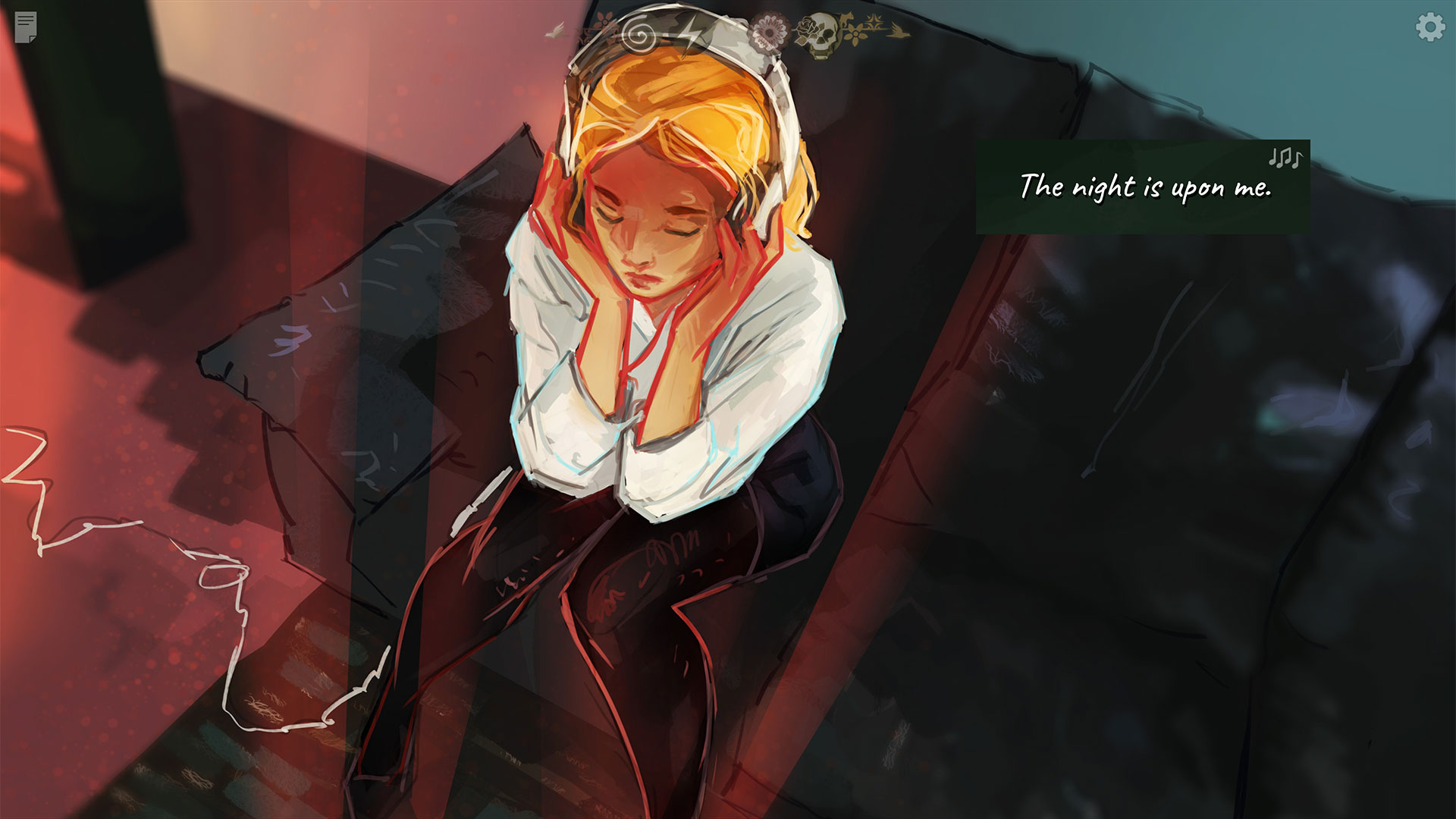
Do you feel like building parallel realities into the story is like a twist on the game concept of branching choices?
Well, I would rather say it’s a nice narrative tool. It helps us create very different situations, and it should emphasize the impact of the decisions the player makes over the course of the story. To be precise, I mostly think it is a twist on the concept we first developed in Along the Edge, with a main protagonist evolving physically and psychologically according to the player input. In Along the Edge, the changes were very gradual and logical.
Here, you’re allowed to alter an important event in your own past and skip back to the present, making the changes more brutal and encompassing, quite akin to the idea of the “butterfly effect.” The reader may even have the opportunity to explore drastically different versions of Alice in the same playthrough, if he desires so.

The shifting soundtrack has been highlighted as a key feature, and it’s also supported by the elements of music inherent in the game’s title and story. Could you talk more about how the music will react to your choices?
There are two kinds of music in Across the Groove. For most of the game, the soundtrack is composed of diegetic and nondiegetic music, as well as some light sound effects to help set up the atmosphere. To give you examples, you may have a piano solo piece when Alice, the main character, is brooding over what to do next in her journey. When she enters a record shop and the stereo is blaring out some garage rock song, you might actually hear what she hears in the soundtrack. Our goal is always to either accentuate the mood of a particular scene or help ground the ambiance of a place.
However, there are also moments when the music is the main focus, and that’s when Alice listens to the vinyl record that allows her to change her past. During these scenes, the text is also sung in the soundtrack and the style of the music you hear will depend on the choices you’ve made earlier in the game.
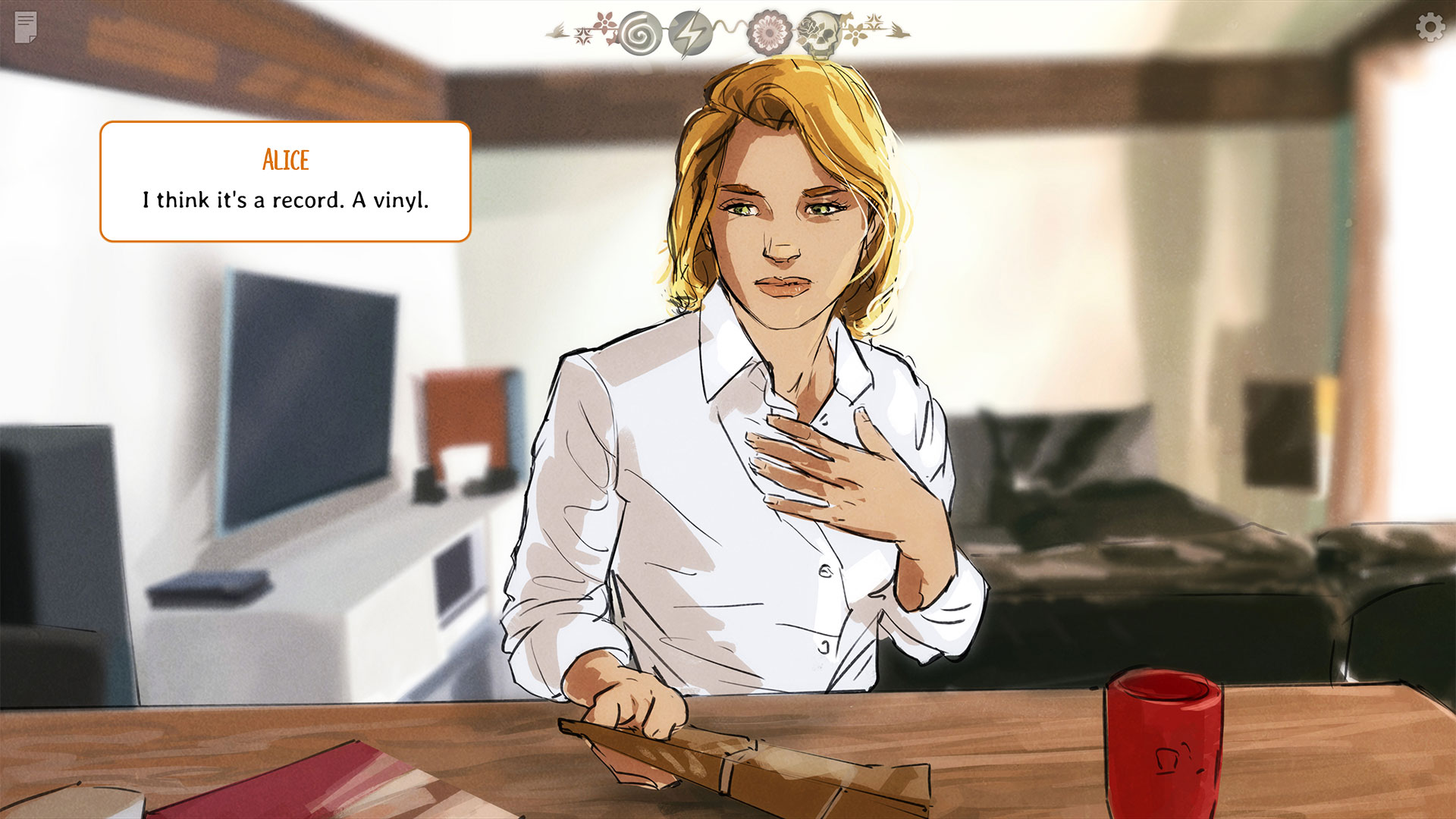
What influenced the soundtrack?
The story being set in the world of rare record collectors, we decided to focus on styles of music that would be most prized by these collectors. Therefore, the soundtrack will refer mostly to psychedelic rock and folk, hard bop, and modal jazz, as well as more contemporary indie/alternative rock and pop.
What are your hopes for Across the Grooves?
Our hopes are the same as in any creative endeavour. We hope our story will resonate with our readers, we hope that most of them enjoy their time while reading it. On a more down to earth note, we also hope that Across the Grooves is successful enough to help finance the game that will come after it, allowing us to go on doing what we love.
